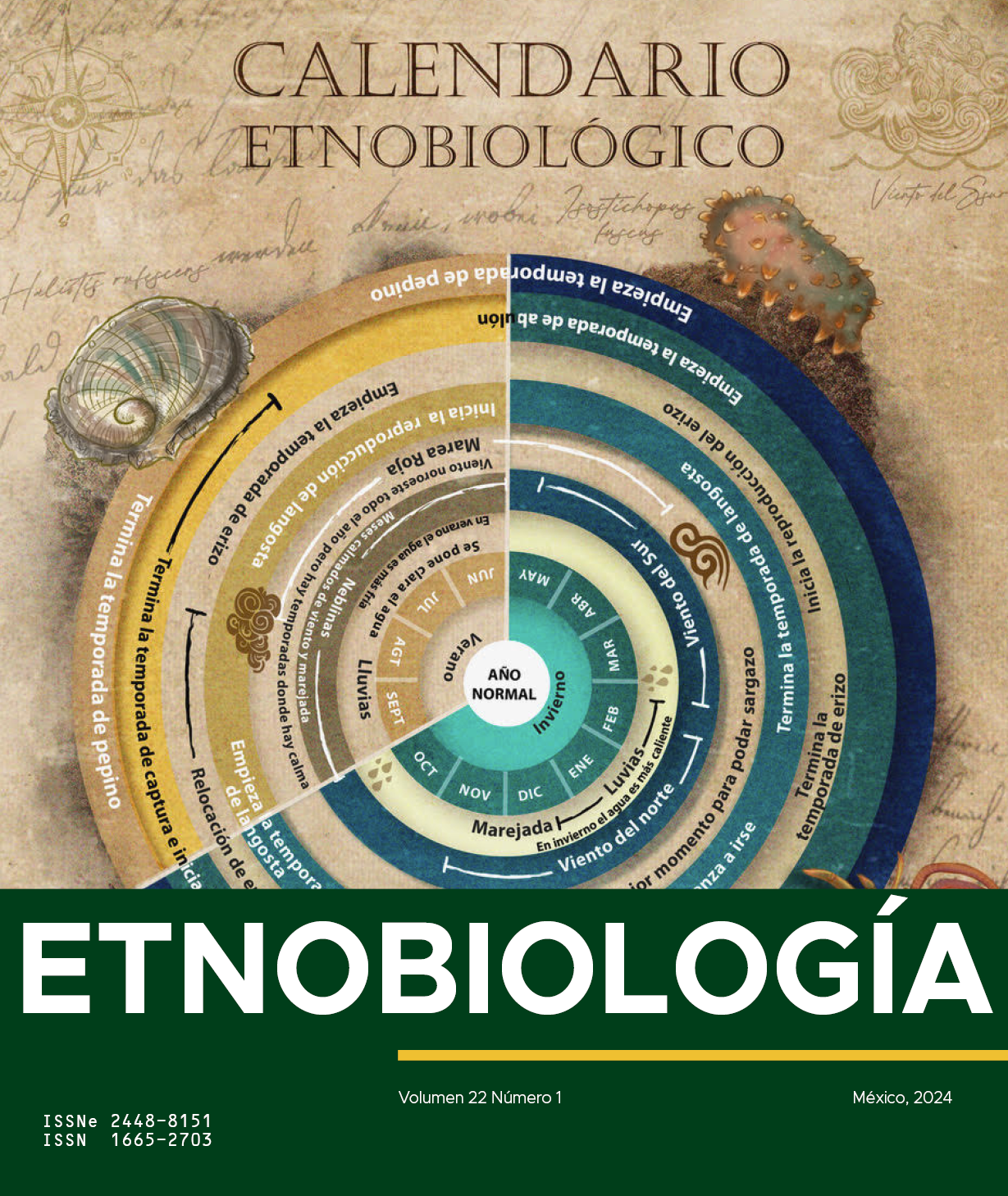ETHNOBOTANICAL KNOWLEDGE ASSOCIATED WITH THE CAPULIN TREE (Prunus serotina Ehrh.) IN MAZAHUA COMMUNITIES OF JOCOTITLAN, STATE OF MEXICO, MEXICO
Abstract
Fruit trees are a source of natural resources and economic income for some local communities. Capulin (Prunus serotina Ehrh.) is a tree native to North America that spreads wildly and is associated with different uses (e.g. food, medicinal, cabinetmaking, timber). The objective of this work is to analyze the ethnobotanical knowledge, use and management associated with the capulin (P. serotina) for the recovery of local knowledge in two Mazahua communities. Through the snowball technique, 59 semi-structured interviews were carried out in the communities of Santa María Citendeje and San Miguel Tenochtitlán, Jocotitlán, State of Mexico, Mexico. The interviews included sections such as: name in native language, parts used, season and method of collection, identification of the quality of the fruit and associated economic activities. The data were analyzed through mention frequencies and the consensus index. In both communities, the capulin (P. serotina) is called “Nres’e” or “Nrensje” in the Mazahua language and is used mainly for food purposes, followed by other uses such as: medicinal, fuel, forage and cabinetmaking. The fruit collection season is from June to August and the method of collection is through cutting by cluster or fruit by fruit. Three types of fruit can be distinguished according to their color and flavor. This study identifies a local use of wild capulin populations, so it is important to promote management strategies that protect the genetic diversity of these populations and improve both the provision of ecosystem services (e.g. living barrier, barrier to control erosion), such as the economic potential for the sale of fruit, wood, teas and derived products (e.g. tamales, jams, water, tea, etc.).


